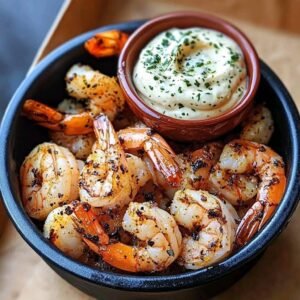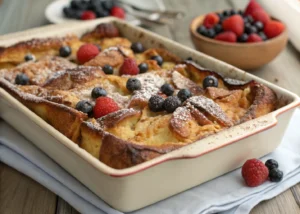Pad Thai is more than just a noodle dish; it’s a symphony of flavors – sweet, sour, salty, and savory – all dancing together in a single bite. This iconic Thai street food has captured hearts worldwide, and while it might seem intimidating to make at home, I’m here to tell you it’s entirely achievable and incredibly rewarding. Forget ordering takeout; with this Homemade Chicken Pad Thai recipe, you can create a truly authentic and deeply satisfying experience right in your own kitchen. Get ready to impress your taste buds!

Why I Love This Recipe
I’ve always been fascinated by the balance of flavors in Thai cuisine, and Pad Thai perfectly embodies that philosophy. What I love most about making this at home is the ability to control the freshness of the ingredients and tailor the taste to my preference. The key to a great Pad Thai lies in its signature sauce, which we’ll make from scratch, ensuring that perfect blend of sweet palm sugar, tangy tamarind, and savory fish sauce. The tender chicken, chewy rice noodles, and crunchy peanuts create an exciting textural contrast that keeps you coming back for more. It’s a vibrant, satisfying meal that transports me straight to the bustling streets of Thailand with every forkful.
List of Ingredients
For the Pad Thai Sauce:
- 3 tablespoons tamarind paste (unsweetened, found in Asian markets)
- 1/4 cup warm water
- 1/4 cup palm sugar, finely chopped or grated (or light brown sugar)
- 3 tablespoons fish sauce (good quality, essential for authentic flavor)
- 1 tablespoon rice vinegar (optional, for extra tang if desired)
- 1 teaspoon Sriracha (optional, for a touch of heat)
For the Stir-Fry:
- 8 ounces flat rice noodles (Pad Thai noodles, about 1/4 inch wide)
- 2 tablespoons vegetable oil or other neutral oil, divided
- 1 pound boneless, skinless chicken breast or thighs, thinly sliced against the grain
- 2 cloves garlic, minced
- 1 small shallot, thinly sliced
- 2 large eggs, lightly beaten
- 1 cup fresh bean sprouts, plus extra for garnish
- 1/2 cup garlic chives or green onions, cut into 1-inch pieces
- 1/4 cup crushed roasted peanuts, plus extra for garnish
- 1 lime, cut into wedges, for serving
- Fresh cilantro, for garnish
- Red chili flakes, for serving (optional)
Swaps and Notes
- Tamarind Paste: This is crucial for authentic Pad Thai flavor. Look for it in Asian grocery stores. If you absolutely cannot find it, you can try substituting with 2 tablespoons of lime juice mixed with 1 tablespoon of brown sugar, but the flavor won’t be exactly the same.
- Palm Sugar: Provides a nuanced caramel sweetness. Light brown sugar is a good substitute if you can’t find palm sugar.
- Fish Sauce: Don’t skip this! It provides the essential umami and saltiness. Good quality fish sauce will make a difference.
- Protein: Shrimp, firm tofu (pressed and cubed), or a combination of chicken and shrimp are all excellent choices.
- Noodles: Use flat rice noodles, often labeled “Pad Thai noodles” or “rice sticks.” Do not use thin vermicelli rice noodles.
- Vegetables: While bean sprouts and garlic chives are traditional, you can add thinly sliced bell peppers or shredded carrots for extra color and nutrition. Add them with the bean sprouts.
- Spiciness: Adjust the Sriracha or add more chili flakes at the end to suit your heat preference.
List of Steps for the Recipes
- Prepare the Pad Thai Sauce: In a small bowl, whisk together the tamarind paste, warm water, palm sugar, fish sauce, rice vinegar (if using), and Sriracha (if using). Stir until the sugar is dissolved. Taste and adjust to your liking – it should be a balance of sweet, sour, and salty. Set aside.
- Prepare the Noodles: Place the flat rice noodles in a large bowl. Cover them with warm (not boiling) water. Let them soak for 20-30 minutes, or until they are pliable but still firm to the bite (al dente). They should bend easily without breaking. Drain well and set aside. Do NOT oversoak or boil, as they will turn mushy.
- Cook the Chicken: Heat 1 tablespoon of vegetable oil in a large wok or a very large non-stick skillet over medium-high heat. Add the thinly sliced chicken and stir-fry for 3-5 minutes, until cooked through and lightly browned. Remove the chicken from the wok and set aside.
- Sauté Aromatics: Add the remaining 1 tablespoon of vegetable oil to the wok. Add the minced garlic and sliced shallot. Stir-fry for 30-60 seconds until fragrant, being careful not to burn the garlic.
- Add Egg: Push the garlic and shallots to one side of the wok. Pour the lightly beaten eggs into the empty side. Scramble the eggs, breaking them into small pieces with your spatula as they cook. Once cooked, mix them with the aromatics.
- Combine & Add Noodles: Return the cooked chicken to the wok. Add the drained rice noodles. Pour the prepared Pad Thai sauce evenly over the noodles and chicken. Toss vigorously with tongs for 2-3 minutes, ensuring the noodles are fully coated and the sauce is absorbed. The noodles should become tender and slightly translucent. If the noodles seem too dry, you can add a splash of water or chicken broth.
- Add Final Veggies & Peanuts: Add the fresh bean sprouts and garlic chives (or green onions) to the wok. Toss for another 1 minute, just until the bean sprouts are slightly softened but still retain some crunch. Stir in the crushed roasted peanuts.
- Serve: Divide the Pad Thai among serving plates. Garnish with extra fresh bean sprouts, crushed peanuts, fresh cilantro, and a lime wedge. Serve immediately.
Tips for Success
- Prep Everything First (Mise en Place): Pad Thai cooks very quickly over high heat, so have all your ingredients prepped, chopped, and ready to go before you start cooking.
- Proper Noodle Hydration: Do not boil your rice noodles like spaghetti. Soaking them in warm water until pliable, then letting them finish cooking in the wok with the sauce, is the key to perfectly chewy (not mushy) noodles.
- Hot Wok, Small Batches: Cook in a very hot wok or large skillet. If you’re making a large quantity, cook in two separate batches to avoid overcrowding the pan, which can steam the ingredients instead of stir-frying them.
- Balance the Sauce: Taste your Pad Thai sauce before adding it to the noodles. Adjust the sweet (palm sugar), sour (tamarind/lime), and salty (fish sauce) elements to your personal preference.
- Don’t Overcook: The beauty of Pad Thai is its fresh textures. Don’t overcook the chicken or the vegetables; they should still have a slight bite.
Serving Suggestions and Pairings
Serve your Homemade Chicken Pad Thai immediately, garnished with fresh lime wedges for squeezing (a must!), extra crushed peanuts, and fresh cilantro. A side of chili flakes can be offered for those who like more heat. For a complete meal, consider pairing it with a light, refreshing cucumber salad or some fresh spring rolls.
Looking for other ways to feed a crowd or simplify weeknight dinners? My Walking Taco Bar is always a fun and easy option, and these Sheet Pan Quesadillas are perfect for quick group meals.
Storage and Leftover Tips
Pad Thai is truly best eaten fresh. The noodles tend to soften significantly upon storage, and the textures won’t be as vibrant. If you do have leftovers, store them in an airtight container in the refrigerator for up to 1-2 days. To reheat, gently warm in a skillet over medium heat, adding a splash of water or chicken broth to help loosen the noodles. Avoid microwaving if possible, as it can make the noodles rubbery.
More Recipes You Will Love
If you enjoyed the bold flavors and easy stir-fry style of this Pad Thai, you might also like these other Asian-inspired or quick-dinner recipes:
- For another fantastic one-pan dinner that’s always a hit, check out my Mexican Chicken and Rice Casserole.
- If you’re craving a rich and comforting dip for your next get-together, my Crockpot Nacho Dip is a definite winner.
- And for a sweet treat to balance out the savory, don’t forget my classic Chocolate Chip Banana Bread – perfect for using up ripe bananas!
Final Thoughts
Making Pad Thai at home is a culinary adventure that’s well worth the effort. The satisfaction of creating this complex yet perfectly balanced dish is immense, and the taste is unparalleled. Once you master the sauce and noodle technique, you’ll be making this comforting and flavorful meal on repeat. I encourage you to try it and share your experience in the comments below! Don’t forget to follow Chef Maniac for more delicious recipes that bring the world’s flavors to your kitchen. Happy cooking!




Leave a Reply